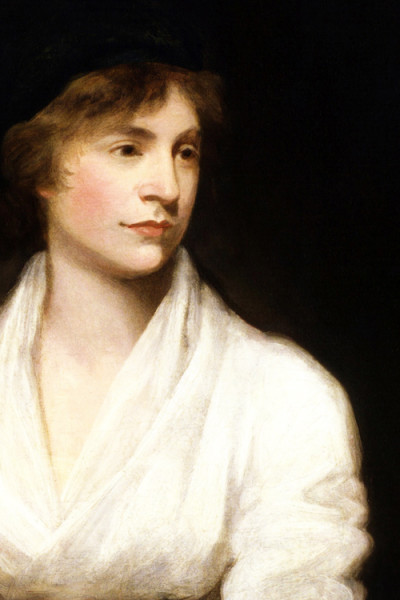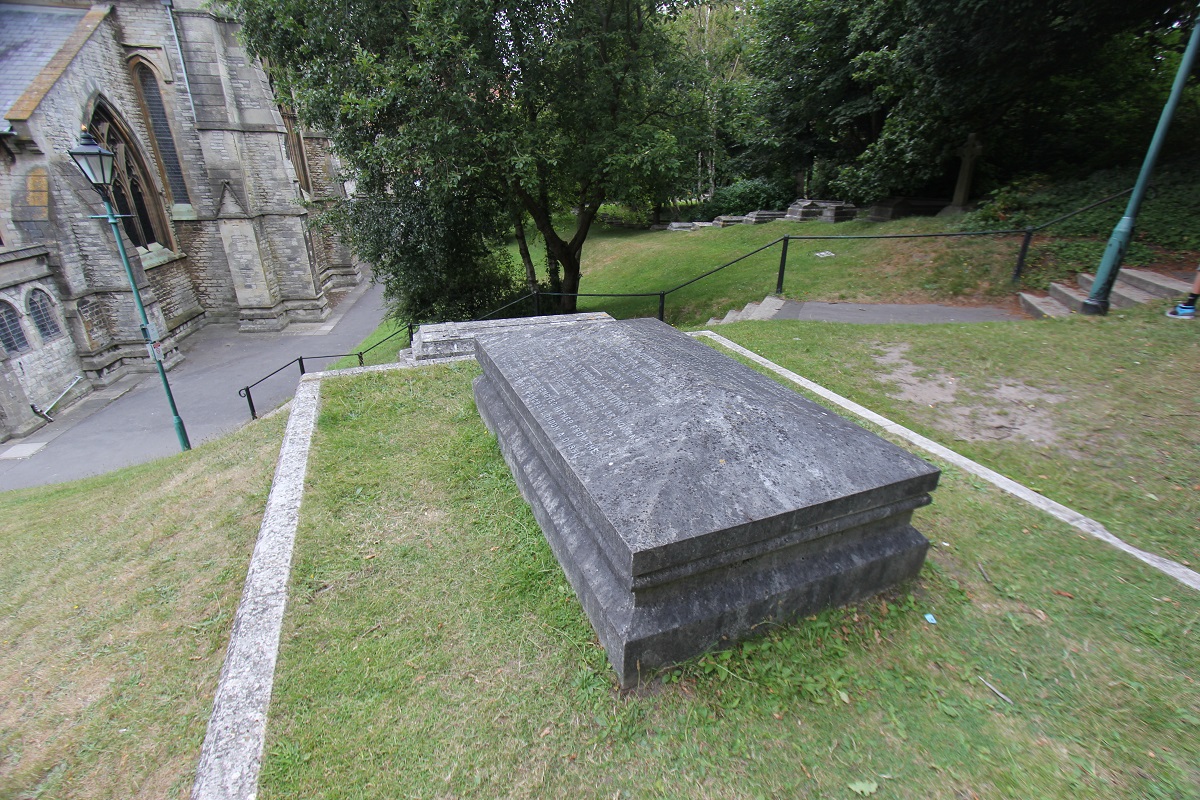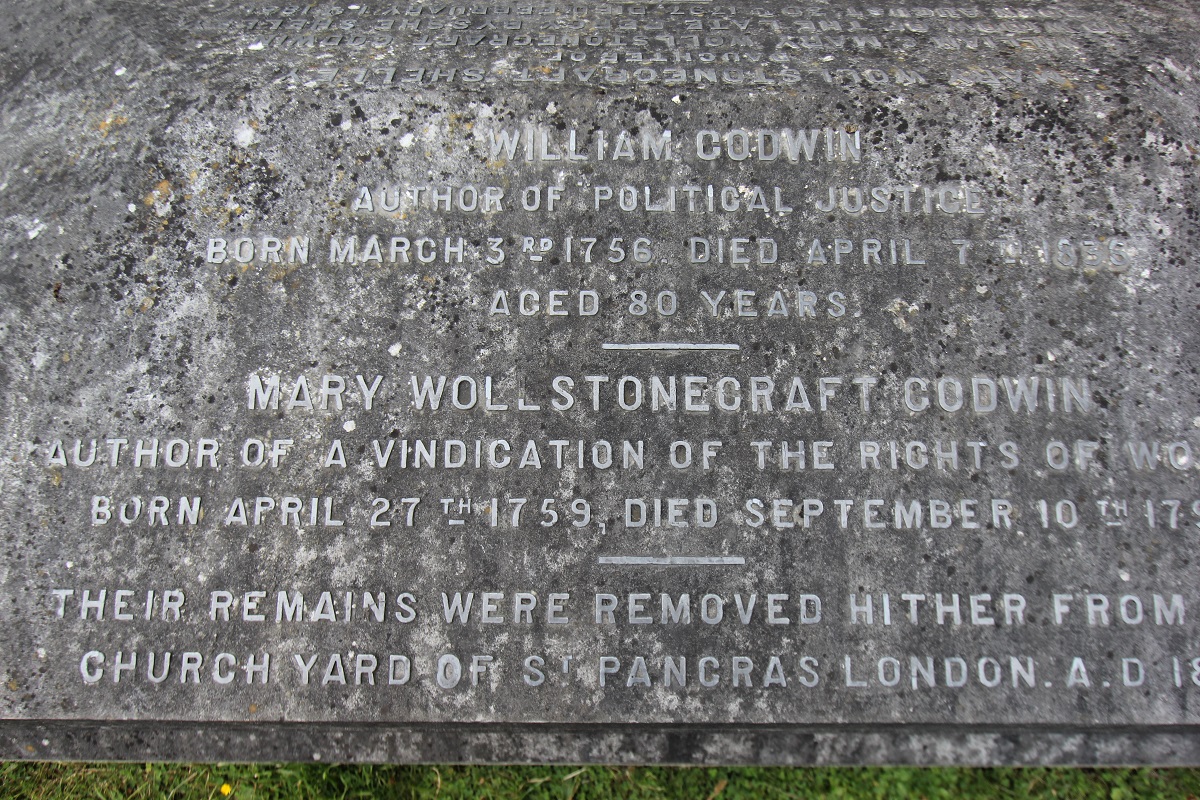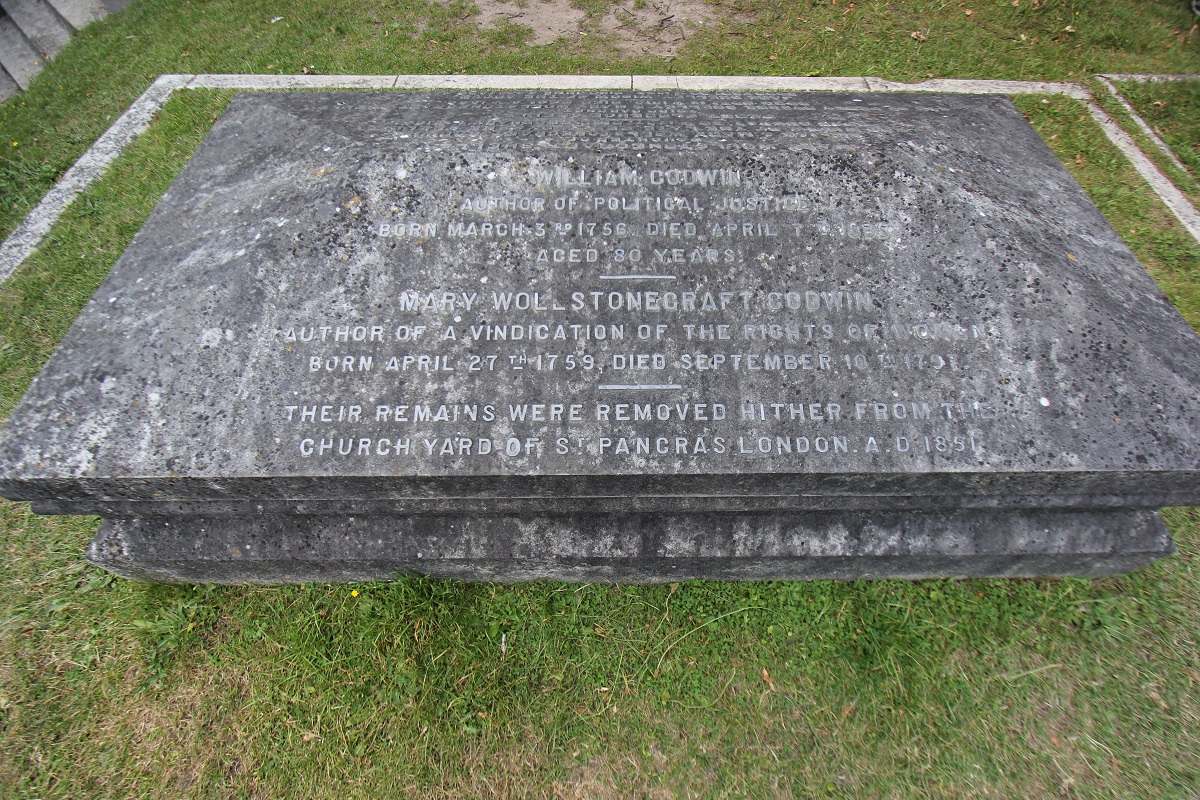Mary Wollstonecraft (Mary Wollstonecraft)

Wollstonecraft was born on 27 April 1759 in Spitalfields, London. She was the second of the seven children of Edward John Wollstonecraft and Elizabeth Dixon. Although her family had a comfortable income when she was a child, her father gradually squandered it on speculative projects. Consequently, the family became financially unstable and they were frequently forced to move during Wollstonecraft’s youth. The family’s financial situation eventually became so dire that Wollstonecraft’s father compelled her to turn over money that she would have inherited at her maturity. Moreover, he was apparently a violent man who would beat his wife in drunken rages.
As a teenager, Wollstonecraft used to lie outside the door of her mother’s bedroom to protect her. Wollstonecraft played a similar maternal role for her sisters, Everina and Eliza, throughout her life. For example, in a defining moment in 1784, she convinced Eliza, who was suffering from what was probably postpartum depression, to leave her husband and infant; Wollstonecraft made all of the arrangements for Eliza to flee, demonstrating her willingness to challenge social norms. The human costs, however, were severe: her sister suffered social condemnation and, because she could not remarry, was doomed to a life of poverty and hard work.
Two friendships shaped Wollstonecraft’s early life. The first was with Jane Arden in Beverley. The two frequently read books together and attended lectures presented by Arden’s father, a self-styled philosopher and scientist. Wollstonecraft revelled in the intellectual atmosphere of the Arden household and valued her friendship with Arden greatly, sometimes to the point of being emotionally possessive. Wollstonecraft wrote to her: “I have formed romantic notions of friendship… I am a little singular in my thoughts of love and friendship; I must have the first place or none.” In some of Wollstonecraft’s letters to Arden, she reveals the volatile and depressive emotions that would haunt her throughout her life.
The second and more important friendship was with Fanny (Frances) Blood, introduced to Wollstonecraft by the Clares, a couple in Hoxton who became parental figures to her; Wollstonecraft credited Blood with opening her mind. Unhappy with her home life, Wollstonecraft struck out on her own in 1778 and accepted a job as a lady’s companion to Sarah Dawson, a widow living in Bath. However, Wollstonecraft had trouble getting along with the irascible woman (an experience she drew on when describing the drawbacks of such a position in Thoughts on the Education of Daughters, 1787). In 1780 she returned home, called back to care for her dying mother. Rather than return to Dawson’s employ after the death of her mother, Wollstonecraft moved in with the Bloods. She realized during the two years she spent with the family that she had idealized Blood, who was more invested in traditional feminine values than was Wollstonecraft. But Wollstonecraft remained dedicated to her and her family throughout her life (she frequently gave pecuniary assistance to Blood’s brother, for example).
Wollstonecraft had envisioned living in a female utopia with Blood; they made plans to rent rooms together and support each other emotionally and financially, but this dream collapsed under economic realities. In order to make a living, Wollstonecraft, her sisters, and Blood set up a school together in Newington Green, a Dissenting community. Blood soon became engaged and after their marriage her husband, Hugh Skeys, took her to Lisbon, Portugal to improve her health, which had always been precarious. Despite the change of surroundings Blood’s health further deteriorated when she became pregnant, and in 1785 Wollstonecraft left the school and followed Blood to nurse her, but to no avail. Moreover, her abandonment of the school led to its failure. Blood’s death devastated Wollstonecraft and was part of the inspiration for her first novel, Mary: A Fiction (1788).
After Blood’s death, Wollstonecraft’s friends helped her obtain a position as governess to the daughters of the Anglo-Irish Kingsborough family in Ireland. Although she could not get along with Lady Kingsborough, the children found her an inspiring instructor; Margaret King would later say she “had freed her mind from all superstitions”. Some of Wollstonecraft’s experiences during this year would make their way into her only children’s book, Original Stories from Real Life (1788).
Frustrated by the limited career options open to respectable yet poor women—an impediment which Wollstonecraft eloquently describes in the chapter of Thoughts on the Education of Daughters entitled “Unfortunate Situation of Females, Fashionably Educated, and Left Without a Fortune”—she decided, after only a year as a governess, to embark upon a career as an author. This was a radical choice, since, at the time, few women could support themselves by writing. As she wrote to her sister Everina in 1787, she was trying to become “the first of a new genus”. She moved to London and, assisted by the liberal publisher Joseph Johnson, found a place to live and work to support herself. She learned French and German and translated texts, most notably Of the Importance of Religious Opinions by Jacques Necker and Elements of Morality, for the Use of Children by Christian Gotthilf Salzmann. She also wrote reviews, primarily of novels, for Johnson’s periodical, the Analytical Review. Wollstonecraft’s intellectual universe expanded during this time, not only from the reading that she did for her reviews but also from the company she kept: she attended Johnson’s famous dinners and met such luminaries as the radical pamphleteer Thomas Paine and the philosopher William Godwin. The first time Godwin and Wollstonecraft met, they were both disappointed in each other. Godwin had come to hear Paine, but Wollstonecraft assailed him all night long, disagreeing with him on nearly every subject. Johnson himself, however, became much more than a friend; she described him in her letters as a father and a brother.
While in London, Wollstonecraft pursued a relationship with the artist Henry Fuseli, even though he was already married. She was, she wrote, enraptured by his genius, “the grandeur of his soul, that quickness of comprehension, and lovely sympathy”. She proposed a platonic living arrangement with Fuseli and his wife, but Fuseli’s wife was appalled, and he broke off the relationship with Wollstonecraft. After Fuseli’s rejection, Wollstonecraft decided to travel to France to escape the humiliation of the incident, and to participate in the revolutionary events that she had just celebrated in her recent Vindication of the Rights of Men (1790). She had written the Rights of Men in response to Edmund Burke’s conservative critique of the French Revolution in Reflections on the Revolution in France (1790) and it made her famous overnight. She was compared with such leading lights as the theologian and controversialist Joseph Priestley and Paine, whose Rights of Man (1791) would prove to be the most popular of the responses to Burke. She pursued the ideas she had outlined in Rights of Men in A Vindication of the Rights of Woman (1792), her most famous and influential work.
Wollstonecraft left for Paris in December 1792 and arrived about a month before Louis XVI was guillotined. France was in turmoil. She sought out other British visitors such as Helen Maria Williams and joined the circle of expatriates then in the city. Having just written the Rights of Woman, Wollstonecraft was determined to put her ideas to the test, and in the stimulating intellectual atmosphere of the French revolution she attempted her most experimental romantic attachment yet: she met and fell passionately in love with Gilbert Imlay, an American adventurer. Whether or not she was interested in marriage, he was not, and she appears to have fallen in love with an idealized portrait of the man. While Wollstonecraft had rejected the sexual component of relationships in the Rights of Woman, Imlay awakened her passions and her interest in sex. She soon became pregnant, and on 14 May 1794 she gave birth to her first child, Fanny, naming her after perhaps her closest friend. Wollstonecraft was overjoyed; she wrote to a friend: “My little Girl begins to suck so MANFULLY that her father reckons saucily on her writing the second part of the R[igh]ts of Woman” (emphasis hers). She continued to write avidly, despite not only her pregnancy and the burdens of being a new mother alone in a foreign country, but also the growing tumult of the French Revolution. While at Le Havre in northern France, she wrote a history of the early revolution, An Historical and Moral View of the French Revolution, which was published in London in December 1794.
As the political situation worsened, Britain declared war on France, placing all British subjects in France in considerable danger. To protect Wollstonecraft, Imlay registered her as his wife in 1793, even though they were not married. Some of her friends were not so lucky; many, like Thomas Paine, were arrested, and some were even guillotined. (Wollstonecraft’s sisters believed she had been imprisoned.) After she left France, she continued to refer to herself as “Mrs Imlay”, even to her sisters, in order to bestow legitimacy upon her child. Imlay, unhappy with the domestic-minded and maternal Wollstonecraft, eventually left her. He promised that he would return to Le Havre where she went to give birth to her child, but his delays in writing to her and his long absences convinced Wollstonecraft that he had found another woman. Her letters to him are full of needy expostulations, explained by most critics as the expressions of a deeply depressed woman but by some as a result of her circumstances—alone with an infant in the middle of a revolution.
Seeking Imlay, Wollstonecraft returned to London in April 1795, but he rejected her. In May 1795 she attempted to commit suicide, probably with laudanum, but Imlay saved her life (although it is unclear how). In a last attempt to win back Imlay, she embarked upon some business negotiations for him in Scandinavia, trying to recoup some of his losses. Wollstonecraft undertook this hazardous trip with only her young daughter and a maid. She recounted her travels and thoughts in letters to Imlay, many of which were eventually published as Letters Written During a Short Residence in Sweden, Norway, and Denmark in 1796.
Gradually, Wollstonecraft returned to her literary life, becoming involved with Joseph Johnson’s circle again, in particular with Mary Hays, Elizabeth Inchbald, and Sarah Siddons through William Godwin. Godwin and Wollstonecraft’s unique courtship began slowly, but it eventually became a passionate love affair. Godwin had read her Letters Written in Sweden, Norway, and Denmark and later wrote that “If ever there was a book calculated to make a man in love with its author, this appears to me to be the book. She speaks of her sorrows, in a way that fills us with melancholy, and dissolves us in tenderness, at the same time that she displays a genius which commands all our admiration.” Once Wollstonecraft became pregnant, they decided to marry so that their child would be legitimate. Their marriage revealed the fact that Wollstonecraft had never been married to Imlay, and as a result she and Godwin lost many friends. Godwin received further criticism because he had advocated the abolition of marriage in his philosophical treatise Political Justice. After their marriage on 29 March 1797, they moved into two adjoining houses, known as The Polygon, so that they could both still retain their independence; they often communicated by letter. By all accounts, theirs was a happy and stable, though brief, relationship.
On 30 August 1797, Wollstonecraft gave birth to her second daughter, Mary. Although the delivery seemed to go well initially, the placenta broke apart during the birth and became infected; puerperal (childbed) fever was a common and often fatal occurrence in the eighteenth century. After several days of agony, Wollstonecraft died of septicaemia on 10 September. Godwin was devastated: he wrote to his friend Thomas Holcroft, “I firmly believe there does not exist her equal in the world. I know from experience we were formed to make each other happy. I have not the least expectation that I can now ever know happiness again.” She was buried at Old Saint Pancras Churchyard, where her tombstone reads, “Mary Wollstonecraft Godwin, Author of A Vindication of the Rights of Woman: Born 27 April 1759: Died 10 September 1797.” (In 1851, her remains were moved by her grandson Percy Florence Shelley to his family tomb in Bournemouth.) Her monument in the churchyard lies to the north-east of the church just north of Sir John Soane’s grave. Her husband was buried with her on his death in 1836. His second wife, Mary Jane Godwin (1766-1841) is also buried here.
In January 1798 Godwin published his Memoirs of the Author of A Vindication of the Rights of Woman. Although Godwin felt that he was portraying his wife with love, compassion, and sincerity, many readers were shocked that he would reveal Wollstonecraft’s illegitimate children, love affairs, and suicide attempts. The Romantic poet Robert Southey accused him of “the want of all feeling in stripping his dead wife naked” and vicious satires such as The Unsex’d Females were published. Godwin’s Memoirs portrays Wollstonecraft as a woman deeply invested in feeling who was balanced by his reason and as more of a religious sceptic than her own writings suggest.
Born
- April, 27, 1759
- Spitalfields, United Kingdom
Died
- September, 10, 1797
- London, United Kingdom
Cause of Death
- Septicaemia
Cemetery
- St Peter Churchyard
- Bournemouth, Dorset, England
- United Kingdom





